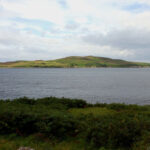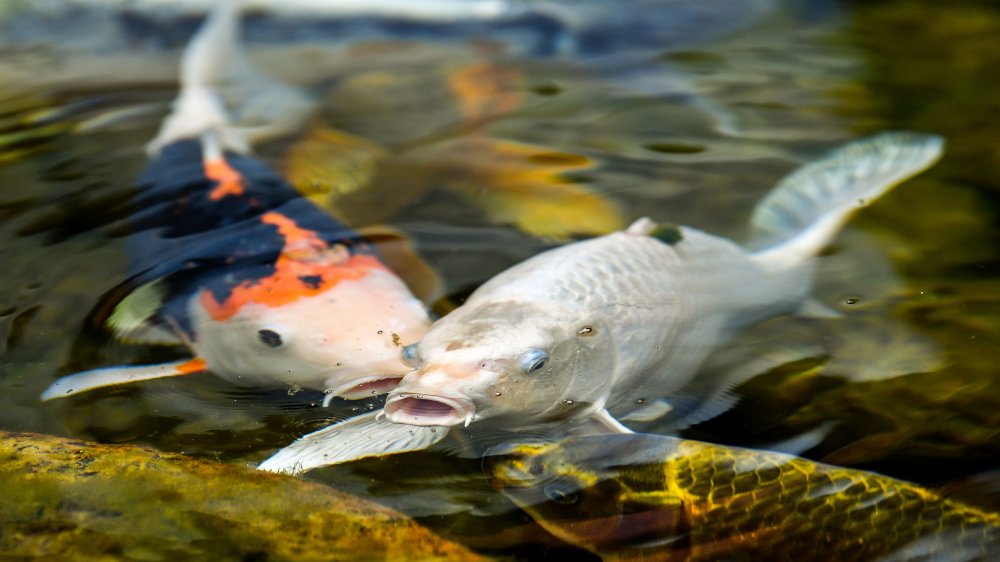
The Haunting Dangers Of Anthrax Island
One of the lasting legacies of World War II is the technological advancements that it engineered. But while many of the inventions brought on by the war, like penicillin, radar, and even the microwave, went on to become greatly beneficial to modern life (via the National WWII Museum), not all of the developments had a positive impact. While it is true that war breeds scientific and technological innovation, the driving force behind these developments is improving weaponry, increasing military power, and, ultimately, winning the war, leading to the creation of far-less-benign inventions, including devastating weapons like the atomic bomb. But while governments around the world were pouring money and resources into military development during the second world war, the atomic bomb was not the only weapon they were focused on. In 1942, three years before the first atomic bomb was dropped, the British government was experimenting with a different way to annihilate their enemies: through biological warfare.
Anthrax is a a deadly and highly infectious disease
Rather than focusing on developing costly explosives, a team of 50 British military scientists and researchers flocked to Gruinard Island, a small island off the Scottish mainland, in the summer of 1942 to conduct secretive tests on the efficacy of anthrax bombs, per The Scotsman. Anthrax, a highly infectious, deadly disease caused by the bacteria Bacillus anthracis, was a prime candidate for bioweapons material since it can make people sick if they inhale the spores, or otherwise come into contact with contaminated food or water, per the CDC.
British researchers began testing the viability of infecting their enemies by spreading the anthrax spores via a bomb, which would disperse the deadly spores throughout the air. Using sheep as test subjects, the scientists dropped anthrax bombs over the remote island. Within three days, the sheep had begun dying off, confirming the bomb’s lethality and earning Gruinard the nickname the “Island of Death,” according to The Scotsman. The researchers concluded: “The report of the Gruinard experiment indicated that biological weapons are highly effective and can paralyze or render cities inhospitable,” but when World War II ended, the research was largely abandoned, and so was the island.
Gruinard Island remained contaminated with anthrax until the 1990s
Gruinard was effectively a no-go zone for almost 80 years after the end of the war, since the British government did little to clean up the remainders of their deadly bioweapon experiments. As a result, the island remained inhospitable, sometimes even contaminating the livestock and animals on the nearby mainland when still-infectious sheep washed up on their neighboring shores. For twenty years, dangerous and infectious anthrax spores continued to contaminate the island, until environmental activists in the 1980s began demanding accountability from the government.
In the mid-1980s, a new method of sterilizing topsoil using formaldehyde and seawater was employed to finally decontaminate the land on Gruinard, per The Scotsman. In 1990, then junior defense minister Michael Neubert declared the island safe. However, even today, Gruinard remains largely isolated, encountering very few visitors aside from lone fisherman or kayakers. But perhaps even more surprisingly, Gruinard is not the only “Anthrax Island” on the globe.
There are other so-called “Anthrax Island” testing sites throughout the world
During the Cold War, the Soviet Union used remote Vozrozhdeniya Island in the middle of the Aral Sea as a top-secret site to test deadly super-pathogens, only to abandon it after a single set of experiments contaminated the area so thoroughly it made clean-up impossible, per the BBC. Not to be outdone, the American government has also been known to utilize isolated islands for biological testing purposes. Plum Island, in Suffolk County, New York, a mile and a half off the shores of Long Island, served as a testing site for deadly animal diseases, such as foot-and-mouth disease in the 1950s and remains the site of the Plum Island Animal Disease Center today, according to How Stuff Works. Although they “don’t do any classified work at all” on Plum Island, according to spokesman for the Homeland Security’s Science and Technology Directorate, John Verrico, it has been identified as a potential target for a terrorist attack, with the aim is to unleash lethal pathogens and bacteria on an unsuspecting populace, which is why it has been under the control of the U.S. Department of Homeland Security since 2003.

The Truth About Tina Turner's Difficult Childhood

The Archangel Uriel: The Untold Truth

Where Are Jim Jones' Descendants Today?

What You Didn't Know About Brandon Lee's Engagement

How Serial Killer Todd Kohlhepp Was Finally Caught

How Richard Ramirez Was Finally Caught

The Tragic Childhoods Of Siegfried And Roy

Why Are Koi Fish So Expensive?

Most Bizarre Tales Of People Being Possessed

Celebrities Who Might Have Faked Their Deaths

























